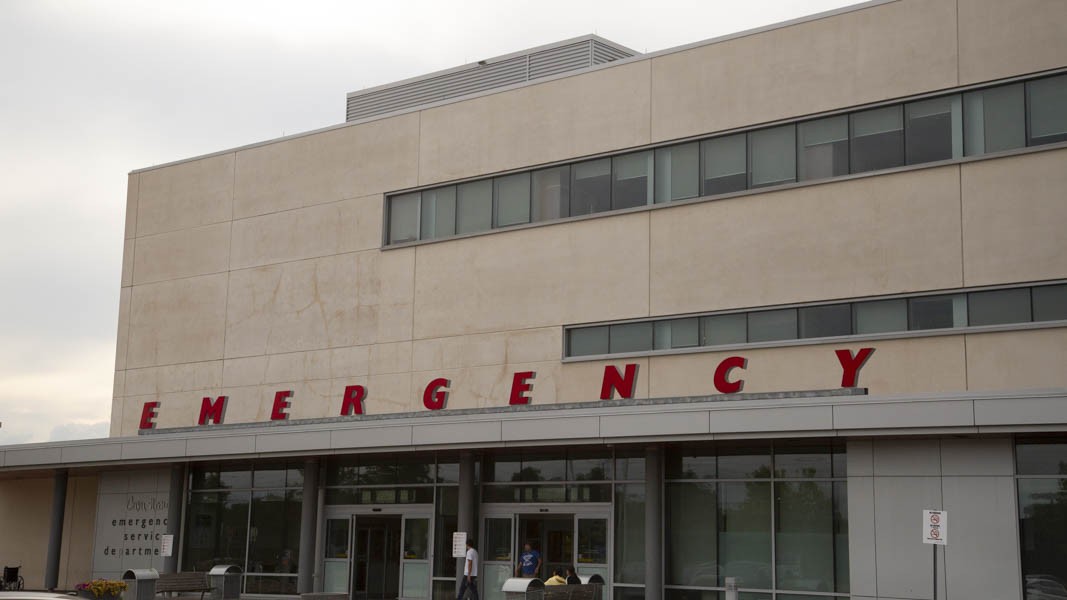
Credit Valley ICU full; health network covering Brampton reports negative ventilator capacity as COVID-19 takes toll on Peel
Almost exactly a month after the first case of COVID-19 was identified in Peel, hospitals in Brampton and Mississauga are feeling the strain. Despite a variety of measures aimed at increasing capacity and a province-wide focus on freeing up space, intensive care beds in both cities are running low.
Saturday morning, Mississauga had 248 cases of the novel coronavirus, with 172 in Brampton. The regional total sat at 452, with 4 deaths.
Confirmed COVID-19 cases in Peel Region as of April 4
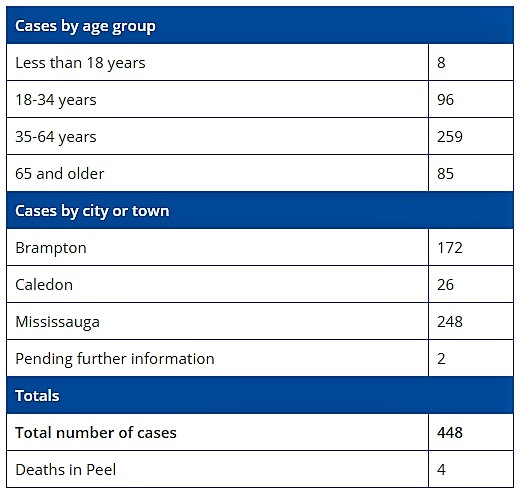
At the start of the pandemic, Brampton Civic — the only place in the city currently capable of treating COVID-19 patients — had just 24 intensive care units. To the south, Mississauga had 100 intensive care beds across two facilities, Mississauga Hospital and Credit Valley.
But neither of the heath networks that run Peel’s hospitals, Trillium Health Partners in Mississauga and Osler in Brampton, has been releasing updated data to give the public crucial information such as how many ICU beds are in use and how many ventilators are available. This despite assurances from Premier Doug Ford that all such information will be made public and calls from frontline healthcare workers asking hospital administrators to be open and honest about vital information, to gain the public’s trust and compliance and to help others make important decisions.
In contrast, health systems in Saskatchewan and some other parts of the country have been much more transparent.
Over the past few weeks, with the number of Ontario COVID-19 cases rising dramatically from low numbers up to the middle of March, efforts have been made to dramatically increase capacity in hospitals.
Before the pandemic was established, according to figures shared in 2018 by the Ontario Health Coalition (which used data from the Canadian Institute for Health Information, CIHI), the province had roughly one bed less than the national average outside Ontario for every 1,000 people. While the average number of beds in all other Canadian provinces sat at 3.28 two years ago, Ontario had just 2.24 per capita, and provincial funding for healthcare per capita has flatlined since.
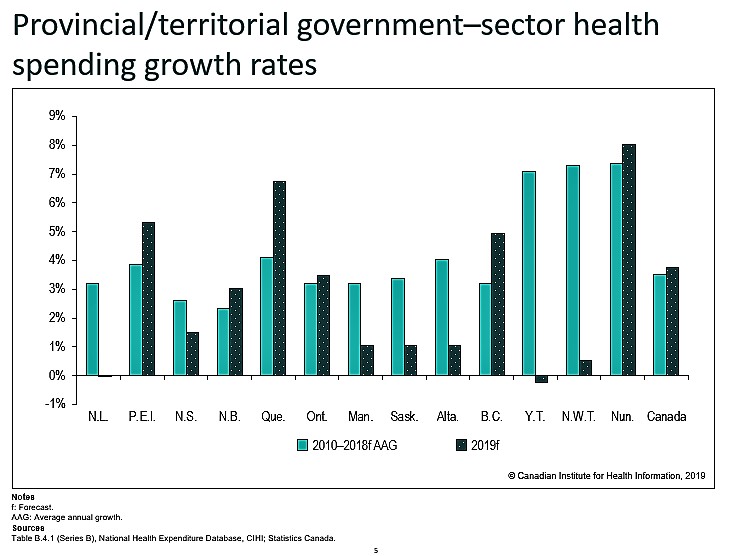
Data released by CIHI last year shows Ontario healthcare funding has lagged far behind other provinces for almost a decade
In Brampton, the situation is much worse, with an average of less than one hospital bed per 1,000 residents, which continues to get even worse as 14,000 new residents move to the city every year.
In July 2019, Kiki Ferrari, executive VP of clinical operations for William Osler Health System, told The Pointer that Brampton had the worst bed to resident ratio in a province that already ranks bottom. “Given our growth rate, we know we need more beds, we know that we have the lowest rates of beds per capita in the province and we are continually working with the ministry to try to add more beds to the system,” she said.
Numbers for 2019 illustrate the strain this has had on the city’s sole full service hospital, with Brampton Civic operating beyond 100 percent capacity throughout last year. Trillium Health Partners’ Mississauga hospitals, for their part, have some of the worst wait times for admittance from the emergency room in Ontario.
In its efforts to improve capacity, the province took drastic measures. On March 21, Ontario issued new rules, in accordance with the Emergency Management and Civil Protection Act, extending the state of emergency to allow hospitals to cancel and postpone elective services, including surgeries. Doctors and health networks were told to begin ramping down elective surgeries in order to free up additional resources to battle COVID-19. Initially this had the desired effect with occupancy at 76.6 percent on March 25, compared to 96.9 percent on the same day in 2019.
Although welcome, these measures only gave hospitals in Peel a chance to momentarily catch their breath and did not solve the looming problems as the COVID-19 crisis bears down on the region.
Instead, data from Critical Care Ontario shows both cities are struggling. Every morning by 5 a.m. hospitals are required to report their ICU, ventilator and COVID-19 numbers to the central resource. For the duration of the pandemic, this body is tasked with measuring demand in hospitals and attempting to coordinate between them effectively.
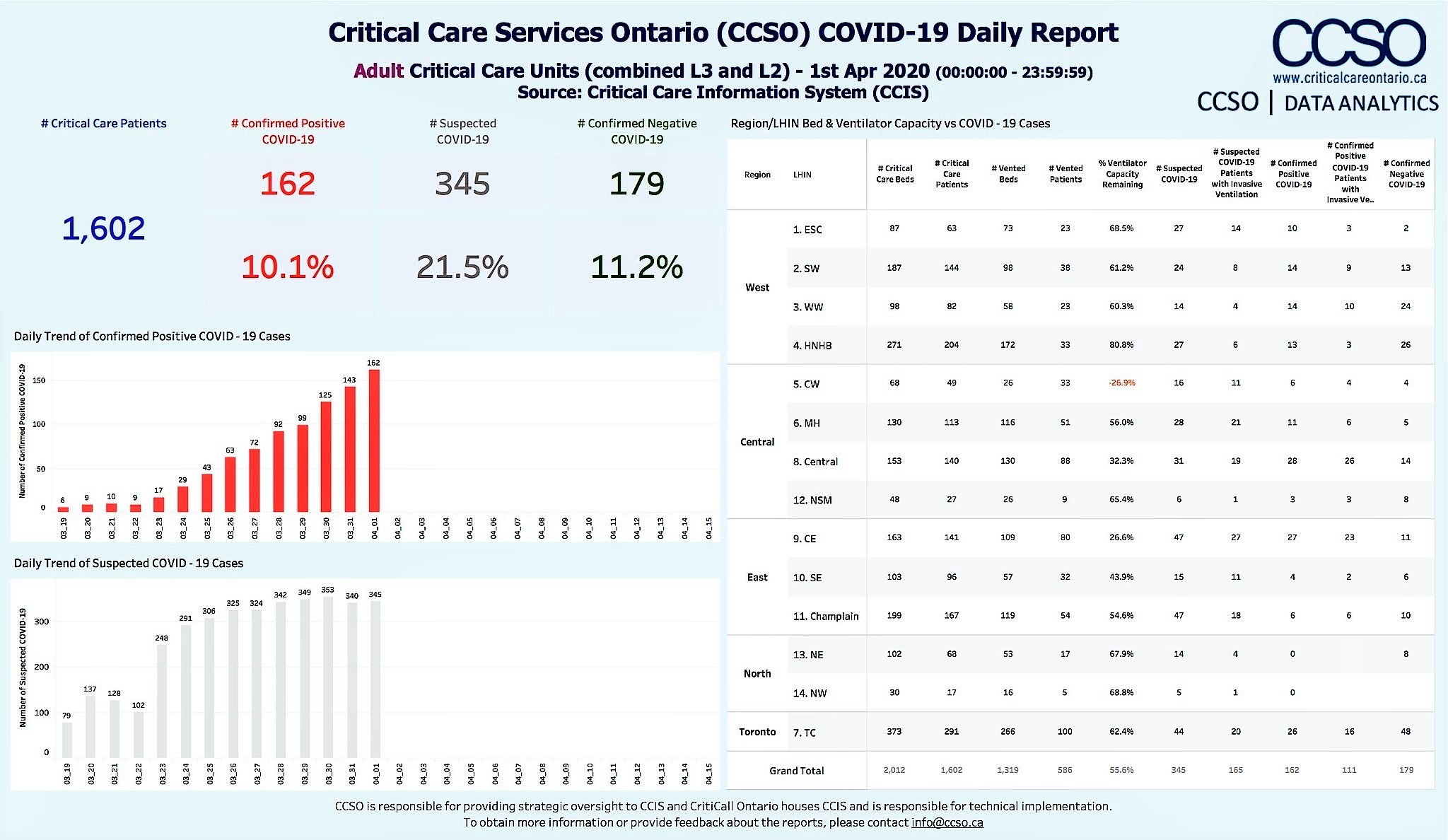
Data from the Critical Care Services Ontario (CCSO) dashboard shows the health network that covers Brampton has already run out of ventilators (the chart above shows it was almost 27 percent beyond capacity), while critical care beds in Mississauga are in short supply. Screenshots of the information shared online are accurate as of the end of April 1.
Ontario currently releases provincial ICU and ventilator numbers, but does not publically break it down by health network or hospital. By contrast, the Government of Saskatchewan has released a variety of health data that can be tracked by area (you can view it here).
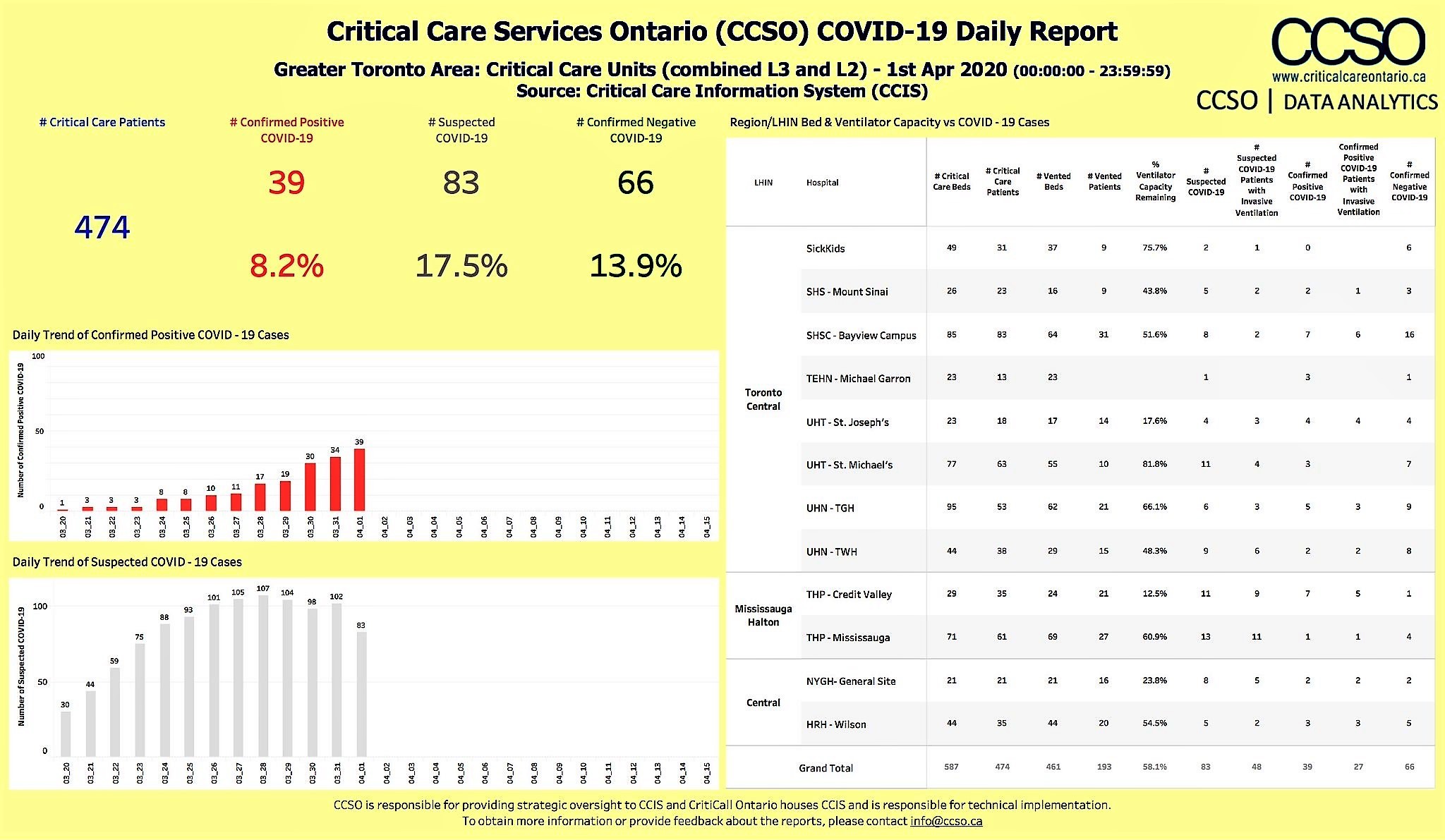
The CCSO data shows Credit Valley Hospital in Mississauga, which had to declare an outbreak this week when four patients in one unit tested positive for COVID-19, has just 29 critical care beds, 24 of which have ventilators. As of April 1, the hospital was caring for 35 critical patients (despite only regularly operating 29 such beds) 21 of whom were on ventilators. This means three days ago beds were already oversubscribed and the remaining capacity for patients requiring mechanical ventilation was at just 12.5 percent. Of the 35 patients in ICU, 11 were suspected to have COVID-19, a further seven were confirmed to be suffering from the virus.
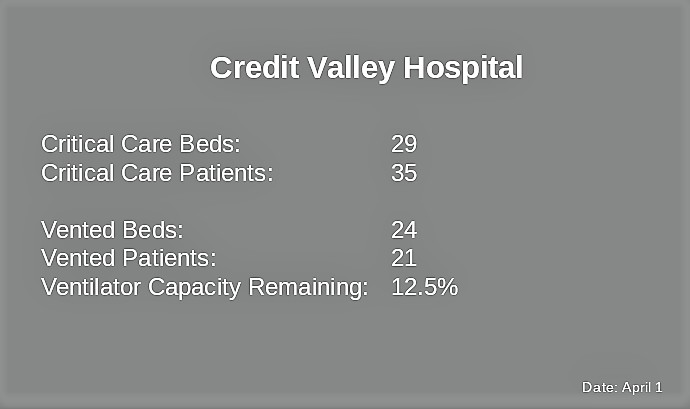
Mississauga Hospital, the city’s other facility, had more space. The vast majority (69) of its critical care beds come with ventilators, but 61 beds were already filled on April 1, with 27 of those patients requiring ventilators. The lower use of ventilators, with more than 60 percent capacity still available, may partially be a result of the relatively low percentage of COVID-19 patients in ICU at the hospital. Just 13 were suspected to have the virus and only one case was confirmed, meaning the vast majority of ICU units at Mississauga Hospital are occupied by patients in care for different health complications.
THP said they would release details of how they plan to expand their critical care capacity from 100 to 200 beds on Friday, but information has not yet been shared.
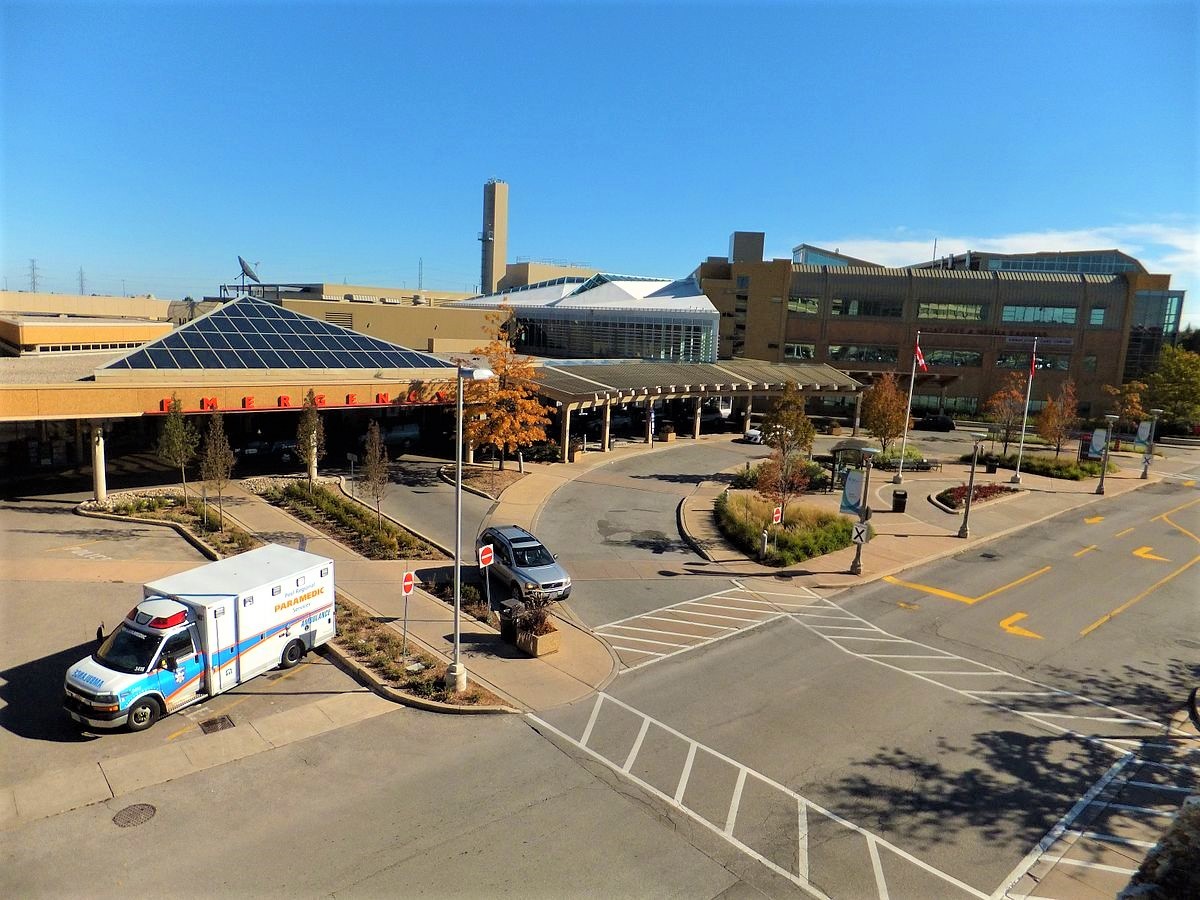
Mississauga's Credit Valley Hospital declared a COVID-19 outbreak this week and reported it has 35 critical care patients but only 29 critical care beds
In Brampton, the situation appears to be worse still. A breakdown of information for Brampton Civic from the hospital itself or from Osler is not available, instead numbers have to be pulled from the Central West Local Health Integration Network (CWLHIN), but these are not broken down by specific hospitals. As a result of this lack of transparency, there is no clear idea of what’s currently happening inside Brampton Civic as the COVID-19 risk threatens to become a full blown crisis.
For a hospital that was already the symbol of hallway healthcare in Ontario, Friday’s release by Queen’s Park of COVID-19 projections poses a particular fear: the provincial government estimates 80,000 cases across Ontario by the end of April, under the current measures in place to control the spread.
CWLHIN includes Orangeville, Brampton Civic, Peel Memorial (no overnight beds), Etobicoke General and Shelburne. Between the hospitals it represents, the network has just 68 critical care beds and only 26 of them are equipped with ventilator capacity. The area as a whole was caring for 49 critical patients on Wednesday, April 1, with 33 on ventilators. In total, it has 16 suspected cases of COVID-19 and six confirmed in these hospitals.
Most worrying is the ventilator situation. With the confirmed Brampton case total more than doubling in four days this week and hospitalizations on the rise, CWLHIN’s ventilator capacity was at negative 26.9 percent on the first day of April.
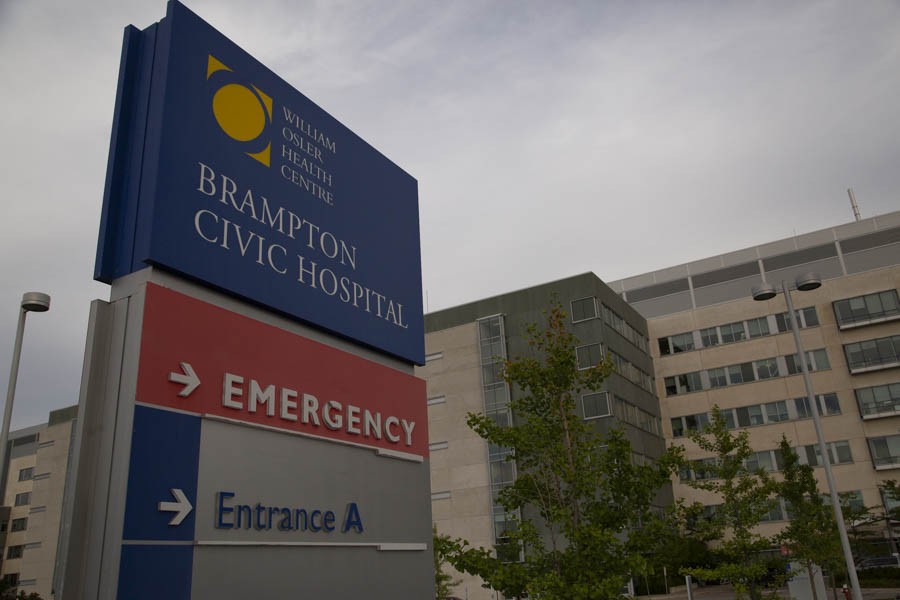
“Osler has the capacity to care for an increased number of COVID-19 patients, including patients who may require ventilation,” Donna Harris, Manager of Public Relations and Digital Media for William Osler, told The Pointer. “In addition, Osler has not yet had to access a provincial stockpile of ventilators, which has recently been approved to increase in number.”
Since Brampton Civic’s opening in 2007 it has been marred by problems, from alarming rates of patients having to be treated in hallways (more than 3,000 in 2018) to dysfunction at the board level shortly after it opened, Osler has had a spotty record of transparency with the public. The hallway data only came out because of freedom of information requests the NDP had to file and similar FOI filings by The Pointer to get more recent numbers, while the network has been criticized by local residents for its lack of consultation and transparency around the expansion of Peel Memorial.
Now, with a looming crisis, local residents are desperate for accurate information, while frontline healthcare workers across Canada have repeatedly voiced frustration about hospital administrators who seem more concerned with reputation management and controlling information out of a claimed need to protect privacy. This runs counter to what Premier Ford said Friday, when he assured Ontario residents that crucial hospital data would be made public.
As The Pointer has previously reported, seven of the region’s stockpile of 209 ventilators are kept in Brampton. Whether the hospital would have access to more than this number remains unclear.
“As part of a multi-stage surge plan, which has been a focus of the organization over the last number of weeks, we have undertaken a number of efforts to expand our capacity in critical care (ICU and CCU) at Brampton Civic Hospital and Etobicoke General Hospital,” Harris added. “These efforts include moving non-critical care patients to different areas of the hospital and actively pursuing relocation of chronically ventilated patients within Osler, or to chronic ventilator facilities in the community.”
The exponential nature of COVID-19 means the pressure on hospitals will only grow in the weeks to come. Capacity issues at Credit Valley and Brampton Civic on April 1 are a worrying sign that more needs to be done to slow the spread of the virus and free up space in the region's strained healthcare systems.
Dire modelling released by the province on Friday showed that, with current measures, 1,600 Ontarians could die by April 30 as a result of the virus. The 80,000 cases predicted by the forecast out to the end of April, if containment measures are not increased, could overwhelm particular hospitals in communities where the spread is most severe.
Currently, Brampton has 2.65 confirmed cases per 10,000 residents (based on a population of 650,000) and Mississauga has 3.31 confirmed cases per 10,000 people (based on a population of 750,000).
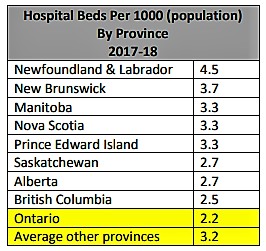
For comparison, Manitoba, with about the same population as the two Peel cities, has a current rate of 1.17 confirmed infections per 10,000 residents (based on a current population estimate of 1.4 million, the same number as Mississauga and Brampton combined).
So the rate of confirmed infections in Brampton is about two and a half times higher and the rate in Mississauga is almost three times higher.
It’s likely that parts of Manitoba have very different factors than parts of the GTA, as there likely wasn’t as much initial exposure due to travel in more isolated areas.
But, as of 2017-18, Manitoba had more than one extra bed per thousand residents than Ontario and had more than three times the number of beds per capita compared to Brampton, which highlights a worrying reality: Peel’s two cities have comparatively higher rates of confirmed COVID-19 cases, but far fewer hospital beds to treat future patients.
ICU data gathered from provincial sources for the first three days of April will do nothing to reassure those concerned that Peel’s hospitals might become overstretched. On April 1, at the same time data was available for Mississauga and Brampton hospitals, there were 124 people in ICU across Ontario as a result of COVID, 98 of them who were on ventilators. The next day, the number of patients in ICU jumped 35 percent to 167 and the number requiring a ventilator increased 15 percent. Friday, April 3, saw the numbers in ICU rise 16 percent to 194 and ventilated patients up 25 percent to 140.
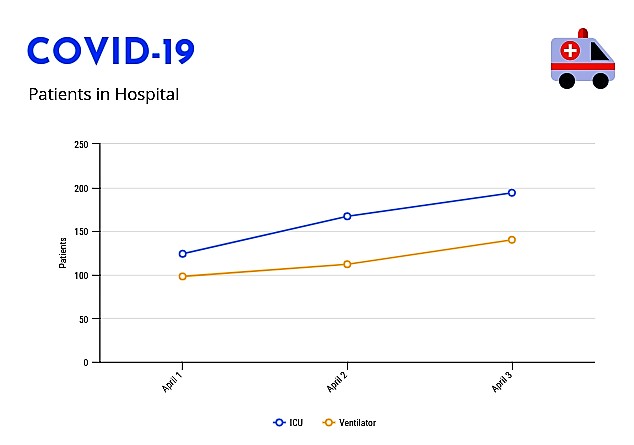
These numbers illustrate just how fast the demand for intensive care and ventilation is growing across the province. Rising cases in Mississauga and Brampton mean rapid action will be required to find additional space for patients or beds in neighbouring hospitals to care for the sick.
“If this doesn’t give a wake up call to people, I don’t know what does,” Ford said Friday, after the harrowing provincial projections were released.
Email: [email protected]
Twitter: @isaaccallan
Tel: 647-561-4879
COVID-19 is impacting all Canadians. At a time when vital public information is needed by everyone, The Pointer has taken down our paywall on all stories relating to the pandemic to ensure every resident of Brampton and Mississauga has access to the facts. For those who are able, we encourage you to consider a subscription. This will help us report on important public interest issues the community needs to know about now more than ever. You can register for a 30-day free trial HERE. Thereafter, The Pointer will charge $10 a month and you can cancel any time right on the website. Thank you.
Submit a correction about this story


